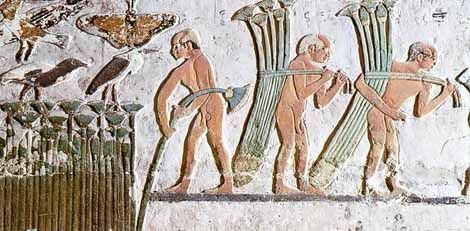Papyrus Bookmark - Tut Anch Amun
unpainted bookmark 5 cm x 19 cm
Bookmarks are a very inexpensive introduction to papyrus painting.
Very suitable for teaching, project work or as a gift.
Tutankhamun's reign was nothing special, but in death he contributed more to the interest in Ancient Egypt than any other pharaoh.
Tip:
12 double fibre pencils - item no. 2701
Protective cover with decorative ribbon - item no. 2172
PGI bookmark
made of hand laid papyrus, produced in Egypt
silkscreen motif, cut edge
Can be coloured with pens and watercolours
| Aspiration scale: | Easy |
|---|---|
| Time Line: | 0,5 Hour |
About the motif:
Tutankhamun's reign was nothing special, but in death he contributed more to the interest in Ancient Egypt than any other pharaoh.
If his magnificent tomb had not been discovered, the Egyptian pharaoh Tutankhamun (ca. 1341 - 1323 BC) would certainly never have achieved such fame. The young king's reign was not particularly remarkable. When he ascended the throne at the tender age of nine, the empire was still suffering from the chaotic conditions that had arisen in the wake of his father Akhenaten's religious reforms.
The royal advisor Eje guided the young pharaoh and succeeded in having Akhenaten's reforms reversed. Politics as well as the original deities and their temples were restored to their former glory.
Tutankhamun's sudden death is still a mystery, even though numerous theories have been put forward. Did he fall victim to malaria? Did he die of gangrene from a broken leg? Was he run over by a chariot? Or killed by a hippopotamus while hunting? Whatever the cause of death, it seems that the king was hastily buried and then just as quickly forgotten.
3,000 years later: In 1922, the British archaeologist Howard Carter discovers Tutankhamun's tomb in the Valley of the Kings. However, the find made headlines less because of the pharaoh's mummy than because of the rich grave goods, which Carter described as a "strange and wonderful jumble of extraordinary and beautiful objects".
The most valuable and by now probably best known treasure was the king's death mask, which contained more than nine kilograms of gold. Other grave goods were intended to ensure that he was strong, rich and well-fed in the afterlife, for example a leopard-skin cloak, four game boards, six chariots, 30 wine jugs and 46 bows. Carter spent almost a decade cataloguing the 5398 grave goods.



